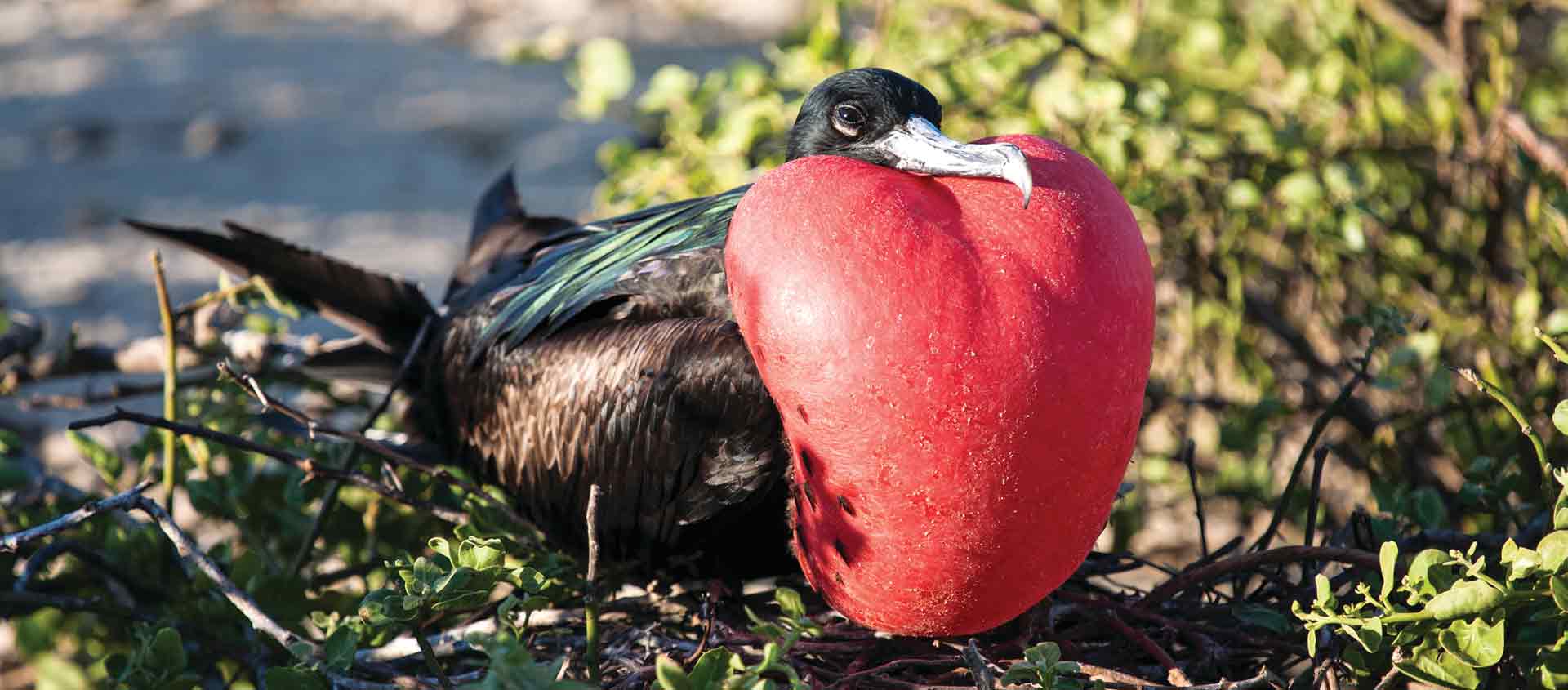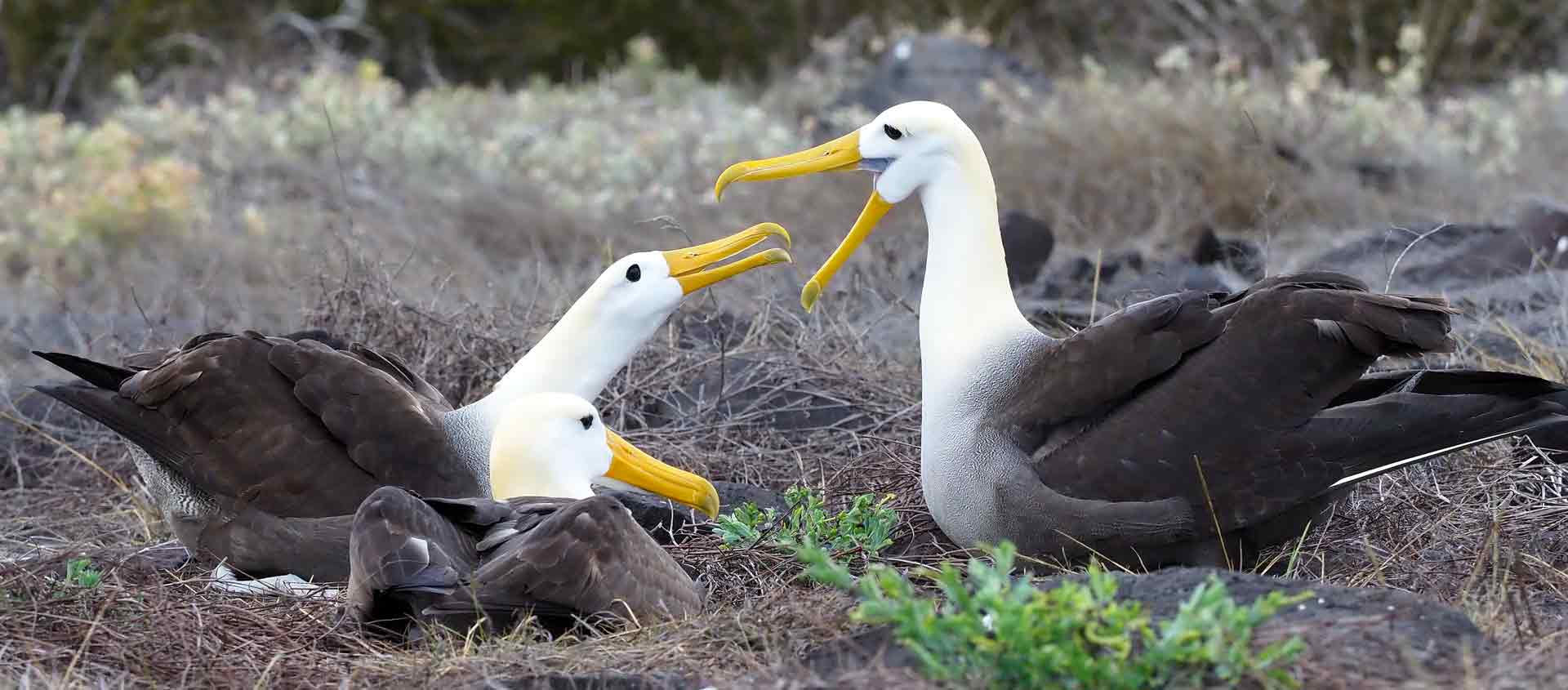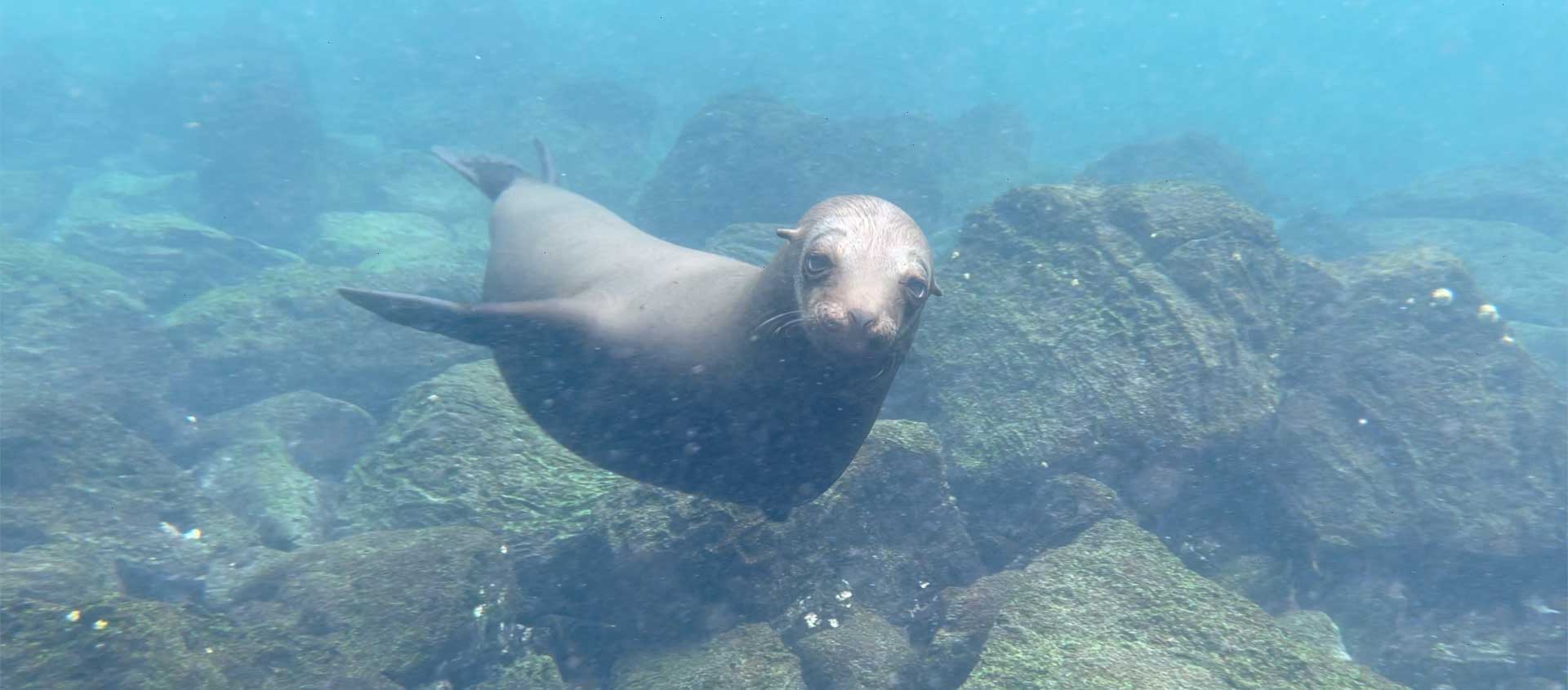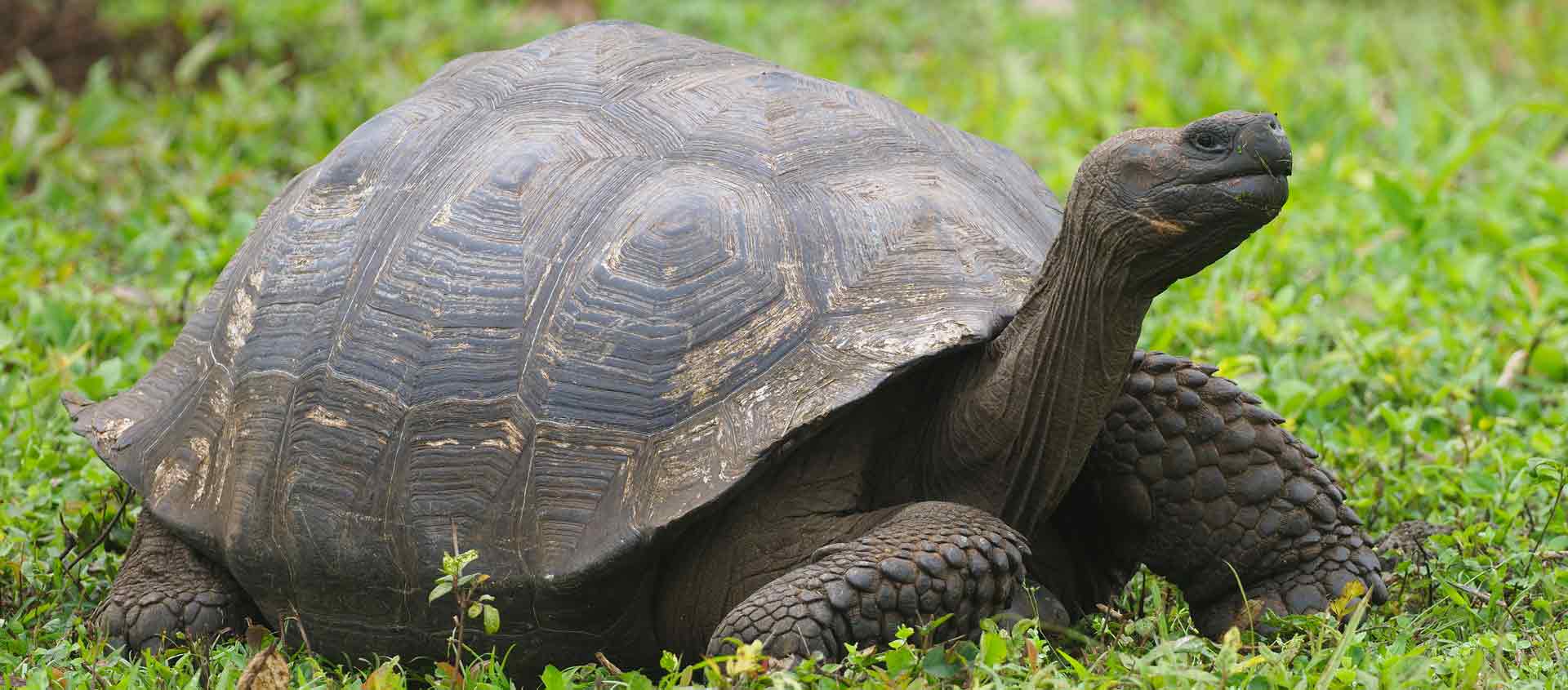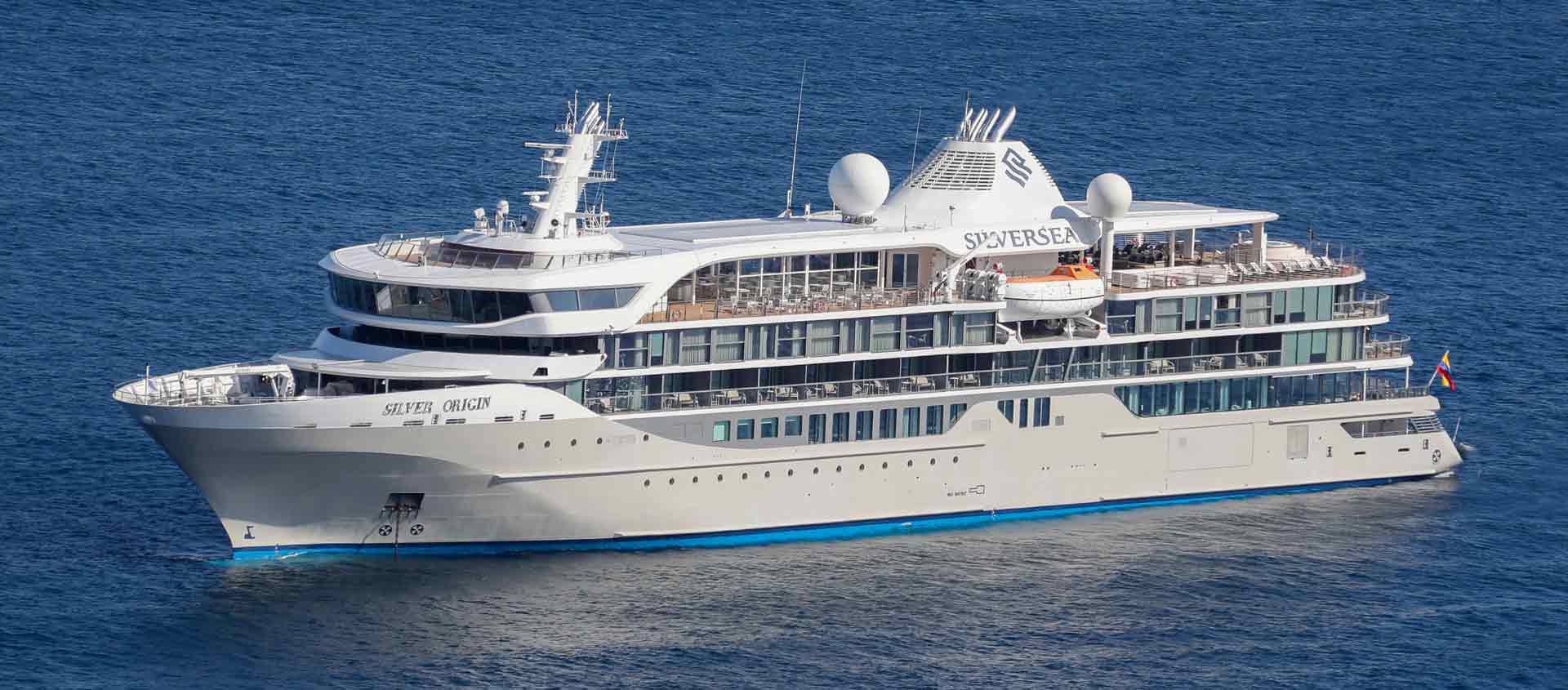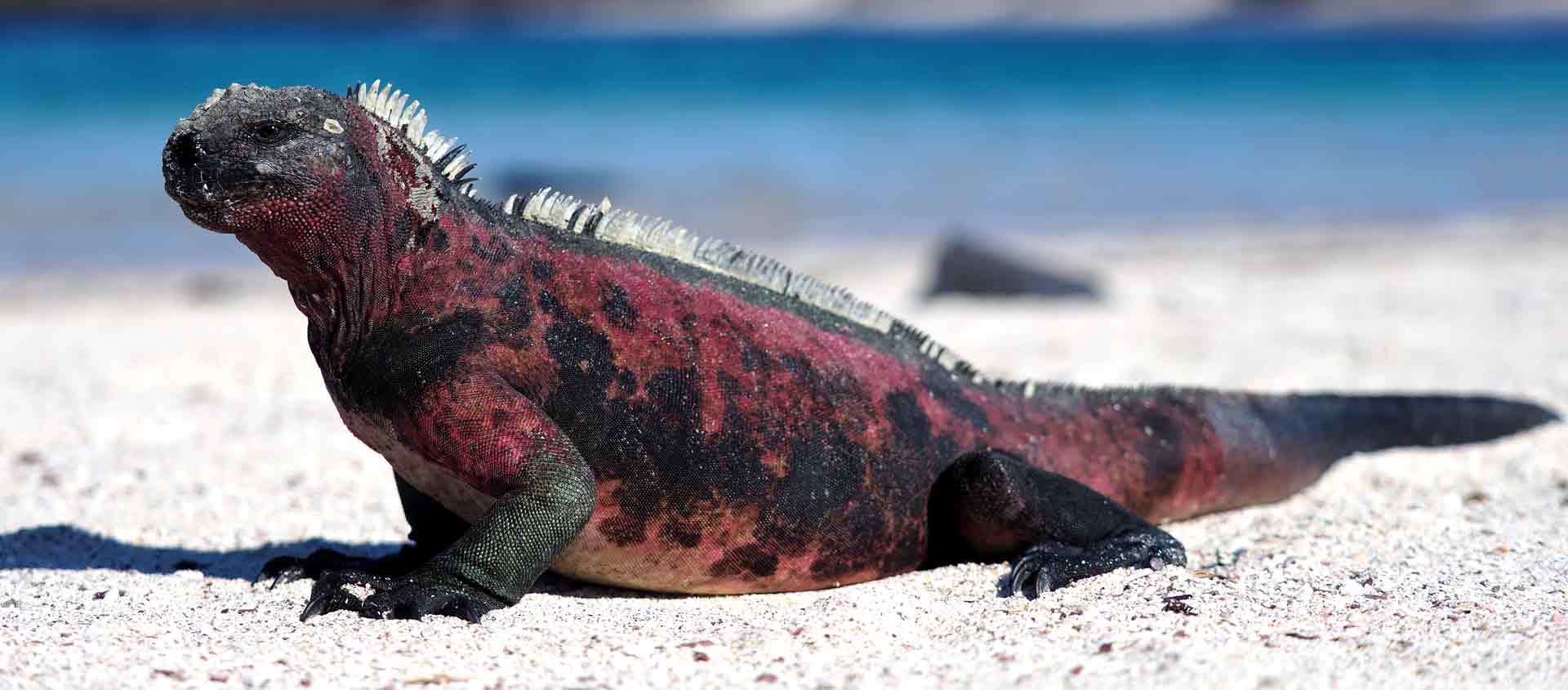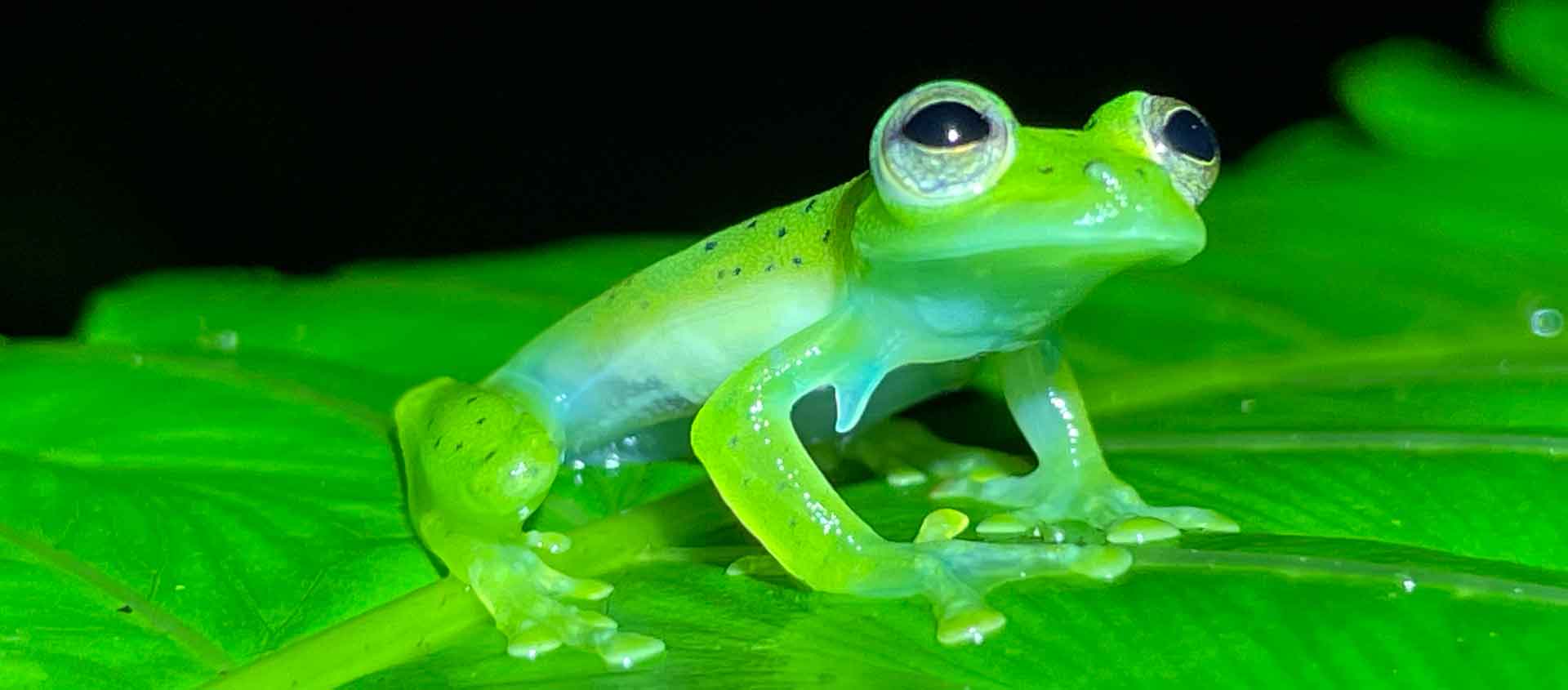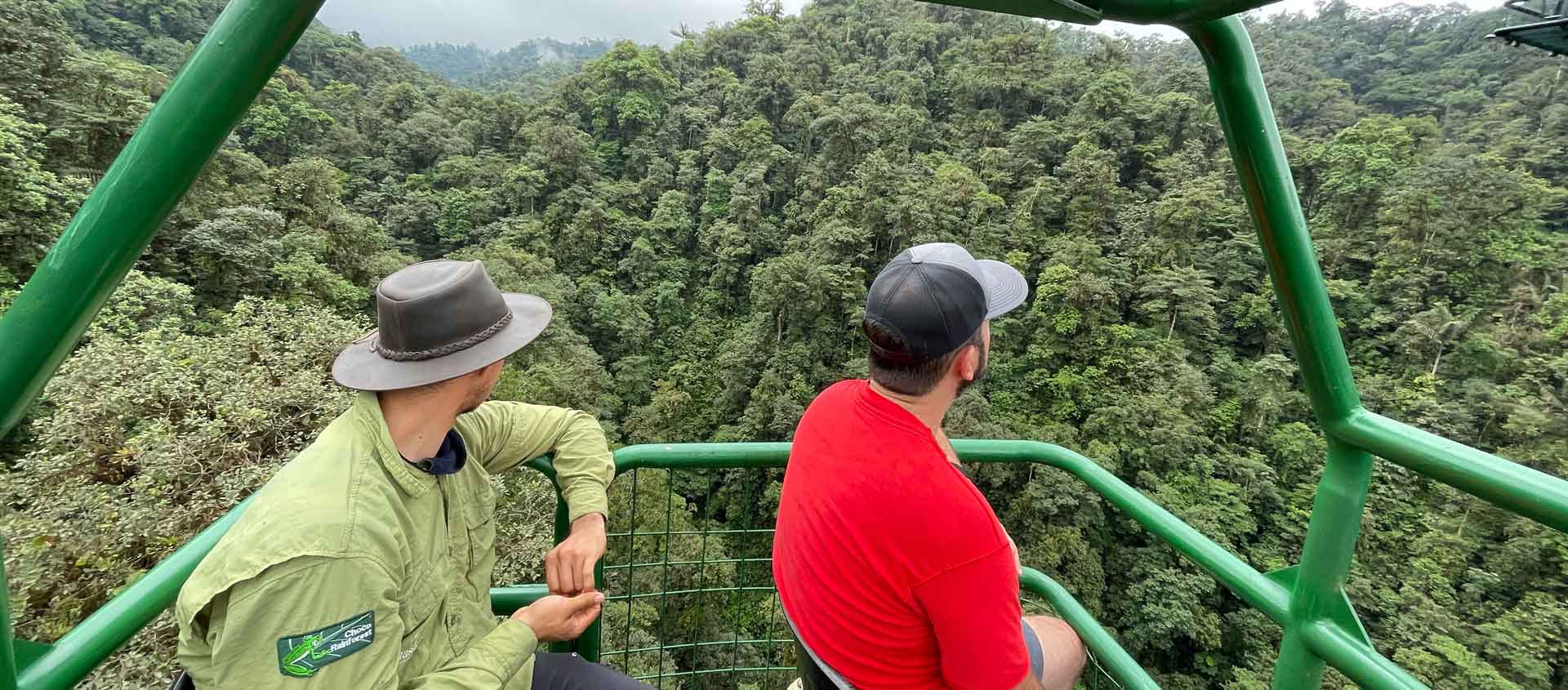Ecuador: Galápagos Islands & Mashpi
onboard Silver Origin
Galápagos Islands and Mashpi
Endemism is the focus of this journey, and nowhere on Earth teaches you more about it than Darwin’s living laboratory, the islands of the Galápagos. Isolated as they are, animals here have developed unique traits, most endearing of which is a total absence of instinctive fear of humans. Travel aboard the Silver Origin, purpose built for travel in the Galápagos archipelago, and find yourself up close and personal with iconic Flightless Cormorants, regal Waved Albatrosses, comical Marine Iguanas, warm-weather penguins, and the Giant Tortoises that give the islands their name. See magnificent lava formations and meet the lucky souls who call these remote specks of land home. Before arriving on the archipelago, immerse yourself in the biological diversity of one of the world’s richest rainforests, the Chocó, at Mashpi Reserve, where new endemic frog and orchid species have just been discovered. Watch evolutionary principles at work in real time on this enlightening adventure to the Galápagos Islands and Mashpi.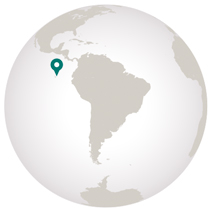
Destinations
- Travel by Air
- Travel by Road
- Travel by Boat
- Travel by Bullet Train
- Travel by Rail
- Travel by Dog Sled
-
Arrive Quito, Ecuador
Arrive this evening in Ecuador’s capital city, situated high in the “Avenue of the Volcanoes” of the northern Andes. Transferto your hotel in the heart of Quito’s Old Town, a UNESCO World Heritage Site packed with colonial monuments and architectural treasures, and rest up for the adventure to come. Overnight at Casa Gangotena.
-
Quito / Mashpi Reserve
After breakfast, take a scenic drive down the western slope of the Andes to Mashpi Reserve. Covering 4,500 acres of lower montane cloudforest, over 70 percent of which is in its primary state, Mashpi forms one of the most significant conservation areas in the entire Chocó region. A private reserve, Mashpi is, first and foremost, a research station where biologists have uncovered species entirely new to science, including the delicate Mashpi Glass Frog and exquisite Magnolia Orchid. Have lunch and then settle into the lodge and appreciate the startling floral profusion of the Chocó’s subtropical rainforest through its floor-to-ceiling windows, or gaze across mist-enshrouded valleys to the forested mountains beyond. Join your fellow travelers and expedition leaders for welcome cocktails and dinner in the restaurant, then overnight at Mashpi Lodge.
-
Mashpi Reserve
Spend two full days at Mashpi, savoring all that the reserve has to offer. Experience dawn on the terrace, where colorful tanagers and euphonias throng the eye-level canopy, then hike one of the many trails through the rainforest surrounding the lodge. From toucans to trogons, over 400 bird species call Mashpi home, including such local specialties as the glorious Toucan Barbet, Moss-backed Tanager, and even the rare Long-wattled Umbrellabird. To fully appreciate this unique ecosystem, take advantage of the lodge’s special features: the Rainforest Canopy Cycle and legendary Dragonfly Gondola, both offering an aerial perspective on the forest. At the Life Center, marvel at insect wonders in the butterfly house or at the plethora of birds and small mammals, from agoutis to Tayras, visiting for the fruit. Guided night hikes showcase the area’s rich diversity of nocturnal forest denizens, especially frogs and insects, while a visit to the Research Center shines a light on the ongoing monitoring of the Chocó’s cryptic mammal fauna. Dinners and overnights at Mashpi Lodge.
-
Mashpi Reserve / Quito
After a final morning at Mashpi, return to Quito and wander the handsomely restored streets of Old Town, with its 17th-century facades, picturesque plazas and magnificent art-filled churches. Overnight at Casa Gangotena.
-
Quito / San Cristóbal / Embark Silver Origin / Kicker Rock
After breakfast, transfer to the airport for a flight to San Cristóbal, the gateway to the Galápagos Islands. Head to the pier and embark your home away from home for the next 7 nights, the 330-foot Silver Origin. Enjoy lunch on board, then as you settle into your suite, the ship repositions to Kicker Rock, just off the coast. This picturesque remnant of a former tuff cone features Red-billed Tropicbirds, Magnificent Frigatebirds, and both Nazca and Blue-footed Boobies circling above.
Please note: Though the itinerary has been designed with local conditions in mind, flexibility is always key with expedition travel. Our course may be subject to weather and tide changes, but alternatives have been well explored, and the adventure will always continue.
-
Genovesa Island
Often referred to as “Bird Island” for the diversity and sheer numbers that can be seen here, Genovesa is one of the Galápagos’ northernmost islands. Its southern side is comprised of a flooded ancient volcanic crater, now known as Darwin Bay. The flat plateau above the bay is covered in a forest of fragrant Palo Santo trees bordering extensive lava fields and is accessed by the natural “Prince Philip’s Steps.” Watch for Magnificent Frigatebirds alongside Nazca and Red-footed Boobies atop the steep cliffs. Scan the lava fields carefully for one of the Galápagos’ top predators, the Short-eared Owl, as it hunts storm-petrels returning to their colony. In the afternoon, explore a different corner of Darwin Bay to see Galápagos Sea Lions resting on the white sand beach, Marine Iguanas basking on rocks, and Great Frigatebirds and Yellow-crowned Night Herons along the hiking paths. Snorkeling is also superb in the waters of Darwin Bay, with large numbers of King Angelfish, Cortez Rainbow Wrasse and the spectacular Giant Hawkfish.
-
North Seymour Island / Sullivan Bay, Santiago Island
Further south in the main cluster of islands, North Seymour is one of the most important seabird rookeries in the Galápagos. Here, you may witness one of the world’s greatest nuptial performances, as male Magnificent Frigatebirds inflate their vivid red gular pouches in hopes of impressing females circling overhead. Pairs of Blue-footed Boobies do their comical mating dances on the black lava rock, while sulphur-yellow Galápagos Land Iguanas dwell in the Prickly Pear Cactus growing among the red-brown volcanic boulders. The snorkeling here is renowned for schools of Razor Surgeonfish and colorful Creolefish, and damselfish and parrotfish abound. This afternoon, visit the lava fields of nearby Santiago Island, which date back only 100 years. Watch crimson Sally Lightfoot Crabs scuttle along the rope-like lava—geologists have adopted a Hawaiian word, pahoehoe, as the technical name for this kind of volcanic rock.
-
Punta Mangle, Fernandina / Punta Moreno, Isabela
Furthest west in the archipelago, Fernandina is the youngest of all the Galápagos Islands—only 300 thousand years old, and still growing. Because of the lava flow, only mangroves and pioneer cacti survive here. The different species of mangroves—Red, White and Black—have formed a root system that serves as a nursery for many species of fish, sharks and Green Sea Turtles. Snorkeling here is extraordinary, as Marine Iguanas can be seen feeding on algae, and Flightless Cormorants diving for prey. This afternoon, hop due east to Isabela, the largest of the islands. Walk the impressive pahoehoe lava field that lies between two active volcanoes, Sierra Negra and Cerro Azul. Here, you can find the largest Marine Iguanas of the archipelago basking on the rocks, and both Flightless Cormorants and Galápagos Penguins diving for food. Among the coastal lagoons, watch for shorebirds such as Black-necked Stilts, White-cheeked Pintail Ducks, and even flaming-pink American Flamingos.
-
Puerto Ayora, Santa Cruz / Isla Santa Fé
Santa Cruz, smack dab in the center of the Galápagos, sports its largest human population—around 18,000 people living in multiple settlements, including Puerto Ayora, home to the famed Charles Darwin Research Station and Fausto Llerena Breeding Center. The restoration of the nearly extinct populations of Giant Tortoises on the islands has been such a resounding success that you can spot tortoises along the road as you travel into the highlands for a visit to Montemar Tortoise Reserve and Coffee Plantation. Throughout the reserve, enjoy excellent photographic opportunities of Giant Tortoises and watch for Galápagos Mockingbirds and Common Cactus Finches flitting amongst the trees. This afternoon, head southeast to tiny Santa Fé, the oldest of the Galápagos islands and the one boasting the highest endemism. Here, the Marine Iguana of Santa Fé can be found, as well as the Galápagos Hawk, Santa Fé Mockingbird, Santa Fé Lava Lizard, and with luck, even the rare Santa Fé Rice Rat. Disembark on a beach teeming with barking sea lions before climbing to the cliffs for jaw-dropping views over the islands. The sparkling sheltered cove is also known for its stellar snorkeling.
-
Gardner Bay & Punta Suárez, Española
Among the oldest islands, Española witnessed the first fauna and flora arrivals in the Galápagos and was probably the springboard for the ancestors of the species that now populate the entire archipelago. Here, you can find the carnivorous Española Mockingbird, as well as the only Marine Iguana population that retains its bright red and green coloration throughout the year. Step ashore onto the beautiful white sand beach at Gardner Bay and scan the surrounds for one of the 1,500 Giant Tortoises that live here today, primarily due to the massive effort of the Charles Darwin Research Center. Punta Suárez lies at the western point of the island. Its dramatic cliffs provide superb thermals for seabirds, and you may spot both Nazca and Blue-footed Boobies, and graceful Swallow-tailed Gulls on the breeze. Española is also the nesting site for over 99% of the population of the critically-endangered Waved Albatross, and, with luck, you may even witness their hilarious sky-pointing and bill-jousting courtship display. Galápagos Doves and occasional Galápagos Hawks also frequent this picturesque promontory.
-
Rodriguez Breeding Center & Cerro Brujo, San Cristóbal
San Cristóbal is the easternmost island of the Galápagos, and the first one visited by Charles Darwin. Here, he collected the first species that would help him formulate his Theory of Evolution. Come ashore in Puerto Baquerizo Moreno, capital city of the Galápagos, and home to around 7,000 people who make their living from tourism or farming on the rich volcanic soils in the highlands. Visit the Rodriguez Breeding Center, dedicated to restoring the tortoise population on San Cristóbal, and keep watch around the tortoise pens for the scarce, endemic San Cristóbal Mockingbird. Then, head to Cerro Brujo, an impressive tuff cone that has been carved by erosion into an outstanding natural sculpture. This is the only place in the archipelago where Red-footed, Nazca and Blue-footed Boobies can be found nesting together. It is also home to one of the most beautiful white sand beaches of the archipelago, where sea lions and Sally Lightfoot Crabs abound.
-
San Cristóbal / Guayaquil
After a final breakfast aboard the Silver Origin, disembark and head to the airport for a short flight to Guayaquil on the mainland. Transfer to the Oro Verde Hotel for lunch and a day-use room prior to your transfer back to the airport for evening flights home.

